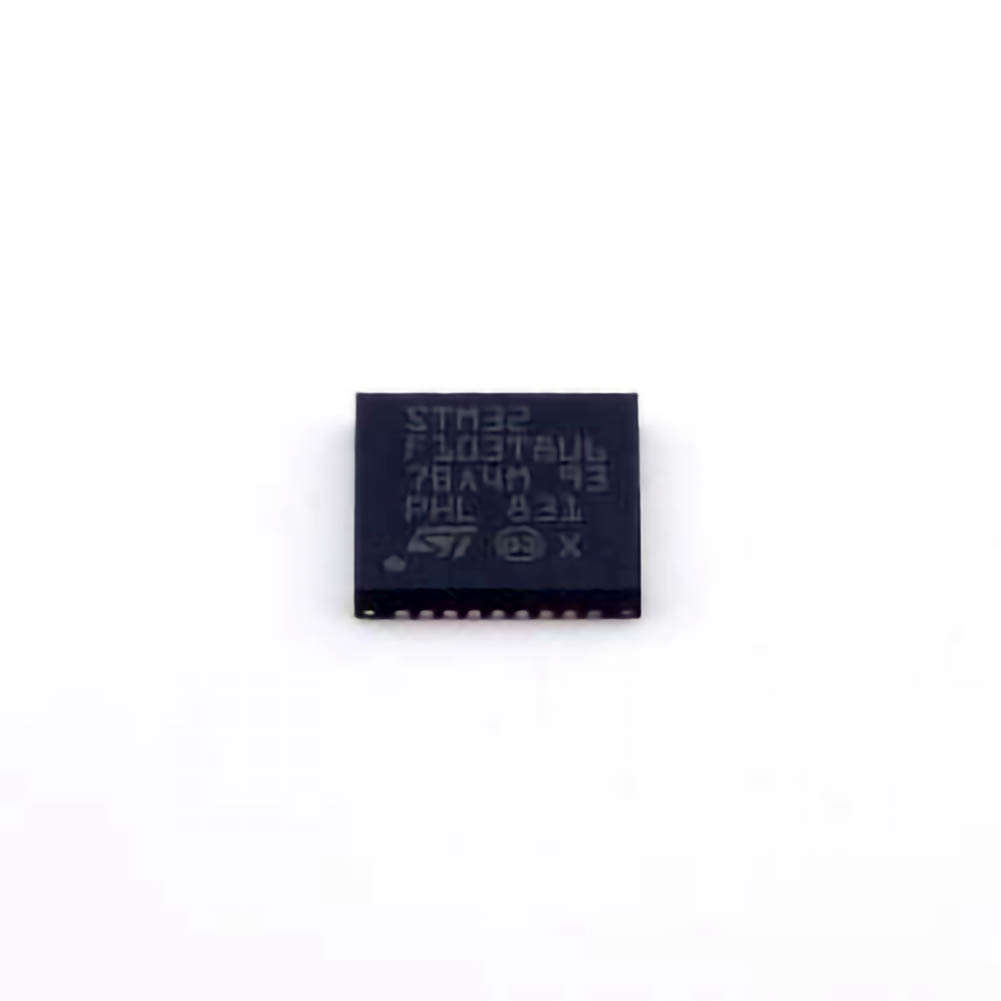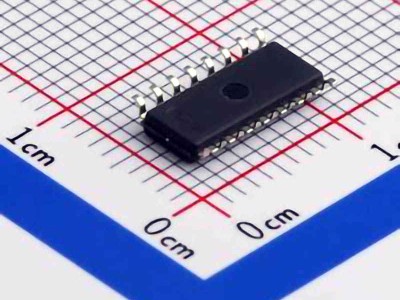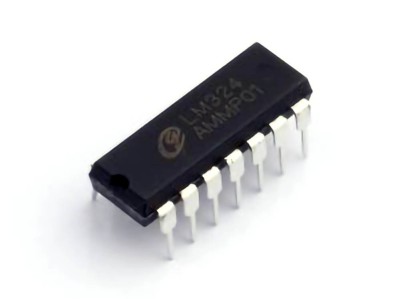
The STM32F103T8U6 microcontroller is widely used in Embedded systems due to its low cost, flexibility, and Power ful performance. However, like any hardware component, users often encounter issues during development and deployment. This article provides detailed troubleshooting strategies and solutions to common problems faced with the STM32F103 T8U6, enabling developers to overcome obstacles and ensure smooth operation of their projects.
STM32F103T8U6, troubleshooting, STM32, embedded systems, microcontroller issues, STM32 development, hardware solutions, firmware debugging, common problems, solutions
Understanding the STM32F103T8U6 Microcontroller and Identifying Common Issues
The STM32F103T8U6 is part of STMicroelectronics' STM32F1 series of ARM Cortex-M3-based Microcontrollers . It features a 32-bit core and is designed for applications that demand high performance in a low-power environment. These microcontrollers find their way into a wide range of applications, from industrial controls and home automation to medical devices and consumer electronics.
Despite its popularity and capabilities, the STM32F103T8U6 is not immune to challenges during development. The following section explores some of the most common issues developers face when working with this microcontroller and offers insights into their underlying causes and solutions.
1. Power Supply Problems
A primary concern for any microcontroller is the power supply. Insufficient or unstable power can lead to a variety of issues such as erratic behavior, failure to boot, or unexpected resets.
Symptoms:
The microcontroller doesn’t power up.
The microcontroller intermittently resets.
The system behaves unpredictably after a power-up.
Possible Causes:
Inadequate Voltage: The STM32F103T8U6 operates between 2.0V and 3.6V. A voltage that falls outside this range can lead to malfunction.
Noise or Ripple on the Power Line: Power supplies with high ripple or noise can cause instability, leading to crashes or resets.
Solutions:
Ensure the power supply is within the recommended voltage range (typically 3.3V).
Use a low-dropout regulator (LDO) to ensure consistent voltage.
Add decoupling capacitor s (10nF and 100nF) close to the power supply pins to filter noise.
Verify the ground connections to avoid common issues like ground loops, which can induce instability.
2. Incorrect Clock Configuration
The STM32F103T8U6 is equipped with multiple clock sources (internal RC oscillator, external crystal/oscillator). Incorrect clock settings can cause the microcontroller to malfunction, affecting Timing -critical operations like Communication protocols, ADCs, and PWM signals.
Symptoms:
The system is running slower than expected.
Peripherals like UART or SPI are not functioning correctly.
Watchdog timers or interrupts are not firing as expected.
Possible Causes:
Clock Source Misconfiguration: The microcontroller may be configured to use an internal RC oscillator, which is less accurate than an external crystal or high-precision oscillator.
Incorrect PLL (Phase-Locked Loop) settings: The PLL configuration can drastically affect the clock speed, resulting in unstable system performance.
Solutions:
Double-check the clock configuration settings in the STM32CubeMX tool or manual registers.
If using an external crystal or oscillator, ensure that it is properly connected and that the correct external oscillator source is selected in the firmware.
Verify the PLL configuration and adjust it as needed to match your system requirements.
3. Bootloader or Flash Programming Issues
The STM32F103T8U6 has a built-in bootloader that allows for firmware updates and debugging. However, improper handling of the bootloader or flash programming can cause issues when uploading new firmware or during the startup sequence.
Symptoms:
The microcontroller does not start after uploading a new firmware.
Communication with the STM32 is not possible via the USART, USB, or SWD interface s.
The microcontroller enters an infinite reset loop after programming.
Possible Causes:
Bootloader Mode: The STM32F103T8U6 has a specific bootloader sequence that may be inadvertently triggered. If the bootloader is enabled incorrectly, the microcontroller may refuse to execute user code.
Corrupted Flash: The flash memory might get corrupted, especially if the programming was interrupted or the voltage fluctuated during the upload.
Incorrect Flash Settings: A mismatch in the bootloader settings and flash memory configuration can result in boot failures.
Solutions:
Ensure the correct bootloader mode is set. Use a jumper or specific pin (BOOT0) to select the appropriate mode (main flash or system bootloader).
Use STM32CubeProgrammer or similar tools to ensure proper flash programming, and check for successful programming without interruptions.
If problems persist, try a mass erase to clear the flash memory, followed by reprogramming the device.
4. Debugging and Firmware Development Issues
Debugging STM32F103T8U6 firmware can be a tricky task. Developers might face issues related to debugging interfaces or lack of visibility into firmware execution.
Symptoms:
The debugger cannot connect to the microcontroller.
Breakpoints are not hit, or the debugger disconnects unexpectedly.
Variables or memory registers are not updating as expected during debugging.
Possible Causes:
Incorrect Debug Interface: The STM32F103T8U6 supports SWD (Serial Wire Debug) and JTAG debugging. A mismatch in configuration between the toolchain and the microcontroller's debug interface may cause problems.
Faulty Debugger Connection: Loose connections, poor soldering, or damaged debug headers can prevent the debugger from establishing a stable connection.
Incompatible Debugging Software: Using an outdated or incompatible version of debugging tools can lead to inconsistent results.
Solutions:
Verify that the correct debugging interface (SWD or JTAG) is selected in both the toolchain and the microcontroller configuration.
Check the physical connection of the debug interface. If you're using a custom board, ensure the SWD/JTAG pins are not damaged or incorrectly wired.
Update your debugging software and firmware to the latest versions and use known good versions of the toolchain (e.g., STM32CubeIDE, Keil MDK, or IAR Embedded Workbench).
5. Peripheral Configuration Problems
Peripherals such as UART, SPI, I2C, ADC, and timers are key components of the STM32F103T8U6’s versatility. Incorrect configuration of these peripherals can lead to failures in communication, data acquisition, or time-dependent tasks.
Symptoms:
UART communication is corrupted or not working at all.
SPI/I2C devices do not communicate as expected.
ADC conversions return incorrect values or fail to trigger.
Possible Causes:
Incorrect Peripheral Initialization: If peripheral registers are not configured correctly, they may fail to operate as expected.
Pin Conflicts: STM32 microcontrollers support multiple functions on each pin. Conflicting peripheral configurations can cause malfunctions or undefined behavior.
Timing Issues: If peripherals depend on timing, issues like incorrect clock setup or mismatched baud rates can cause communication failures.
Solutions:
Review the peripheral initialization code carefully, either using STM32CubeMX or manually setting registers.
Check for pin conflicts and ensure that the correct alternate functions are selected for each pin used by the peripherals.
For communication interfaces, verify clock speeds, baud rates, and configurations match the requirements of your external devices.
Advanced Troubleshooting and Solutions for STM32F103T8U6
In part one, we covered fundamental troubleshooting strategies for common STM32F103T8U6 issues related to power supply, clock configuration, flash programming, debugging, and peripheral initialization. In this section, we dive deeper into more advanced troubleshooting techniques that can help you resolve complex problems in embedded system development.
6. Watchdog Timer Resets
The STM32F103T8U6 features two types of watchdog timers: the Independent Watchdog (IWDG) and the Window Watchdog (WWDG). These timers are designed to automatically reset the microcontroller if the firmware gets stuck in an infinite loop or experiences some other failure. While this is a valuable safety feature, it can also become a source of frustration during development.
Symptoms:
The microcontroller continuously resets or reboots unexpectedly.
The firmware stops executing at a se EMI ngly random point.
Possible Causes:
Watchdog Not Properly Reset: If the watchdog timer is not periodically reset (kicked), it will trigger a system reset.
Faulty Firmware Logic: An infinite loop or unhandled exception can cause the watchdog to trigger repeatedly.
Timing Issues: The watchdog timer might be set to a value too low, causing it to trigger before the main program has a chance to reset it.
Solutions:
Review the watchdog timer configuration and ensure that the timer is being properly reset within your main loop or critical sections of your code.
Increase the watchdog timeout value if the system needs more time to process tasks.
Add error handling or watchdog reset routines to prevent unintentional resets.
7. Overheating and Thermal Issues
Microcontrollers like the STM32F103T8U6 can be sensitive to thermal stress. Overheating may cause the microcontroller to enter a protective shutdown or reduce performance to prevent permanent damage.
Symptoms:
The microcontroller becomes unusually hot to the touch.
System performance degrades or becomes erratic.
The device resets or fails after running for an extended period.
Possible Causes:
Inadequate Cooling: In embedded systems, insufficient heat dissipation may cause the microcontroller to overheat.
High Power Consumption: Complex peripherals, especially high-speed ADCs or communication interfaces, can draw significant power and heat the chip.
Solutions:
Ensure the system has adequate ventilation or active cooling (e.g., heat sinks or fans) if high-performance peripherals are used.
Use low-power modes of operation whenever possible to reduce heat generation.
Check the current consumption of the microcontroller and peripherals to ensure it’s within the safe operating range.
8. External Interference and EMI
Electromagnetic interference (EMI) can cause unpredictable behavior in microcontroller-based systems. This is especially true in industrial applications where devices may be exposed to sources of interference such as motors, power lines, and radio-frequency devices.
Symptoms:
The microcontroller exhibits random resets, crashes, or communication failures.
Noise in analog signals, such as from ADCs or sensors, results in corrupted data.
Possible Causes:
Insufficient Shielding: Lack of proper shielding can make the microcontroller vulnerable to EMI.
Poor Grounding: A weak or improperly routed ground plane can amplify the effects of EMI.
Solutions:
Implement proper grounding techniques and shielding, especially for sensitive analog signals.
Use ferrite beads or inductors to filter high-frequency noise.
Separate high-power and low-power components to minimize the risk of EMI coupling.
9. Boot Configuration and Firmware Recovery
When you encounter persistent issues with booting the STM32F103T8U6 or recovering from a failed firmware update, additional techniques such as using the system bootloader or connecting via serial interfaces may be necessary.
Symptoms:
The microcontroller is unable to boot into normal operation.
The firmware cannot be recovered after a failed programming attempt.
Possible Causes:
Boot Pin Settings: Incorrect configuration of the BOOT0 or BOOT1 pins can prevent the microcontroller from starting correctly.
Corrupted Firmware: A corrupted bootloader or main firmware may cause the microcontroller to fail to boot.
Solutions:
Use the STM32 system bootloader (accessible via USART, USB, or other interfaces) to restore or reprogram the firmware.
Ensure that the BOOT0 pin is set to the correct state to either load from the internal flash or enter bootloader mode.
By implementing these advanced troubleshooting techniques, developers can identify and resolve more complex issues, ensuring that their STM32F103T8U6-powered systems run reliably. Whether it’s managing power consumption, debugging firmware, or mitigating external interference, the key to successful development lies in thorough understanding and methodical problem-solving.
This concludes the two parts of the article on troubleshooting and solutions for the STM32F103T8U6 microcontroller. By following these guidelines, you can ensure that your embedded system runs smoothly and avoids common pitfalls.
Partnering with an electronic components supplier sets your team up for success, ensuring the design, production, and procurement processes are quality and error-free.


